More and more businesses are embracing the concept of big data versus treating it like just another buzz-phrase.
Once heralded as “the next big thing,” adoption of big data analytics is at an all-time high with no signs of slowing down anytime soon. With big data and business analytics software projected to reach nearly $200 billion in revenue by 2019, it's clear that the business world's decision to bet on data has paid off so far.
So, what's the catalyst for such rapid adoption in the first place?
After all, not all data is created equal and the need for massive numbers varies from company to company. According to a 2017 big data survey conducted by NewVantage, the top reasons for big data initiatives include decreasing expenses, exploring innovation opportunities and launching new products and services:
Although big data has uncovered new opportunities for businesses to reel in revenue, it's also created a slew of challenges for marketers.
According to analytics firm SAS, the most common problems presented by big data to marketers are three-fold:
- Determining which pieces of data to gather: with so many moving pieces of any business, it's natural for marketers to find themselves in a situation where they're drowning in a sea of numbers
- Picking between analytics tools and platforms: more data means more tools, which means more picking and choosing on behalf of marketers already saddled with time and budget constraints
- Turning data into action: while it's easier than ever to acquire mounds of data at a moment's notice, the act of spinning that data into gold is easier said than done
Does that mean that all hope is lost for marketers looking to benefit from big data?
Absolutely not.
After all, data-driven marketing has become the norm of today's businesses. Rather than trust assumptions or gut feelings, modern marketers are making decisions by the numbers available to them. In fact, spending on data-driven marketing was up over 60% between 2015 and 2016.
The key takeaway here? Data is in high demand. Likewise, there's an expectation for marketers to use data analytics to capture leads, fine-tune their campaigns and ultimately grow the bottom lines of the businesses they represent.
To say that big data analytics is a game-changer for marketers would be a massive understatement. Below we've outlined five distinct up-sides of data analytics, along with the tools and real-life examples of how marketers can use analytics to their advantage in today's data-driven world of advertising.
1. Better Analytics = Better Design
As noted in the NewVantage survey, some of the greatest value of big data comes in the form of decreased expenses and faster launch of new products and services. This is being played out in the design world, where data is helping machines learn how to create sophisticated branding elements.
Your logo is the anchor of your brand, but getting one created can be a costly and lengthy affair:
Do it yourself, and you risk missing key elements that designers have been trained to understand.
Online platforms like Tailor Brands are eliminating the need for expensive designers and creative teams, getting brands up and running quickly and inexpensively. They’ve discovered how to take a user’s subjective input about their brand, and apply that to the huge amounts of data collected through their user base to provide machine-generate designs in minutes.
The system makes artistic decisions around colors, typefaces and layout based on design best practices and user feedback, essentially providing access to a massive database of design knowledge. Because their system is set up to continuously learn from all user input, they are able to spot design trends and preferences too, continually improving results.
All of this means brands no longer face the expense of working with logo design teams and can get out there and start marketing in record time.
2. Perfectly Timed Content
Speaking of time, marketers today face some major pain points in regard to content. That is, squeezing the most out of each and every piece we publish is much easier said than done.
Bear in mind that there's more content floating around social media and the blogosphere than ever before. Smart Insights' Email Marketing statistics 2017 shows the best open and click-through rates for email campaigns in the UK.
Fortunately, analytics can play a major role when it comes to timing and content distribution.
Consider how Growbots' email marketing platform optimizes send times based on engagement and the peak activity of email subscribers based on data from over one million cold campaigns.
The results of their analysis are nothing to scoff at, either. According to Growbots, email delivery optimization has the potential to nearly double the conversion rate of any given campaign.
Collecting data on followers and subscribers ultimately teaches marketers the best window to reach them, time after time.
This same logic can be applied to the world of social media, too. That's why solutions such as social scheduling tool Sprout Social created its “ViralPost” platform which automatically schedules tweets and posts in conjunction with the online activity of relevant influencers. This sort of scheduling clues us into both the power of data and automation for today's marketers.
Big data often reminds us of a rather obvious detail of any given marketing strategy: we can't be everywhere at once. With these tools on deck, however, the task of marketing around the clock actually becomes a reality.
3. Boosting Sales
Given the cost and legwork involved with leveraging big data, there should be a financial incentive for hopping on the bandwagon, right?
Luckily, there is.
Take the world of ecommerce, for example, where a keen attention to analytics could potentially make or break a business. As noted by Dataconomy, big data has huge implications for sales as it applies to...
- Optimized pricing: by tracking purchases and trends in real-time, brands can ultimately identify patterns that result in higher profits (something that 30% of businesses fail to do year after year)
- Demand: big data analytics can forecast needs for inventory and essentially prevent the need for a business to ever be out of stock
Predicting trends: keeping a close eye on industry data provides opportunities to determine which products are buzzing with consumers and what's falling flat.
For marketers making digital sales, even the most minor details uncovered via analytics could result in major profits or losses. Again, the information gleaned by big data often represents points that many marketers wouldn't think twice about until they were aware of where they might be going wrong.
4. Conversion Optimization
The need to craft our on-site content in such a way to decrease bounce rate, improve click-throughs and increase conversions is a no-brainer.
Yet the degree to which big data analytics can help accomplish these goals may be less obvious.
If nothing else, analytics help marketers better understand how their leads and traffic get from Point A to Point B; meanwhile, those same marketers can understand bottlenecks in their funnels and where their lost traffic is dropping off.
Bear in mind that 48% of big data is attributed to customer analytics, meaning that drilling deep to understand customer behavior should be a matter of "when" not "if".
The rise of big data is a stern reminder for marketers to take a data-driven approach to conversion optimization. With variables such as headline and CTA copy to color scheme and imagery, there's plenty to consider on any page of your site or store.
The more data you have to assess the behavior of your traffic, the better.
5. Promoting Personalization
With so much emphasis on metrics in regard to big data, it's easy to forget the people and relationships behind those same numbers.
The concept of big data creating more personalized experiences may seem like an oxymoron but just take for example how chatbots are being used to boost customer satisfaction.
For example, the more a fashion chatbot for a brand like H&M “talks” to a customer, the more it learns about their preference in terms of products. The bot is then able to come up with personalized product recommendations as a result:
While marketers aren't expected to rely on robots, they are expected to regularly gather data from customers in pursuit of a more personalized experience.
Even beyond the world of bots, Amazon's recommendation engine is a prime example of personalized recommendations via data collection. Considering that lack of personalization annoys nearly three-quarters of all consumers, the key is for marketers to deliver relevant recommendations only.
And although personalization is considered a must-do, 39% of marketers note that a “lack of data” is their biggest challenge toward making it happen.
Therefore marketers looking to get closer to their customers should learn more about them sooner rather than later. Through the power of big data analytics, that crucial personal connection is more than possible.
Breaking Down the Benefits of Big Data
Each of these points speaks to the need for marketers to make data-based decisions versus trusting their guts. From increased opportunities to reach leads and increase sales to fine-tuning your existing marketing campaigns, many marketers have yet to tap into the power of big data. Yet if the upward trend towards further adoption of big data analytics is a sign of things to come, those who get on board today most certainly have an edge over their competition.
source http://www.smartinsights.com/digital-marketing-platforms/big-data-digital-marketing-platforms/5-ways-big-data-analytics-can-help-business/
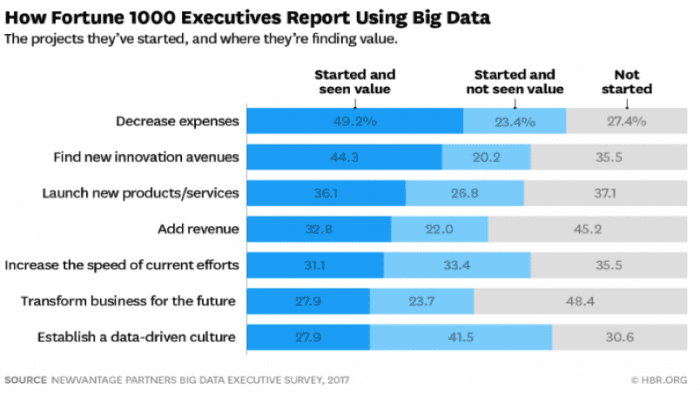
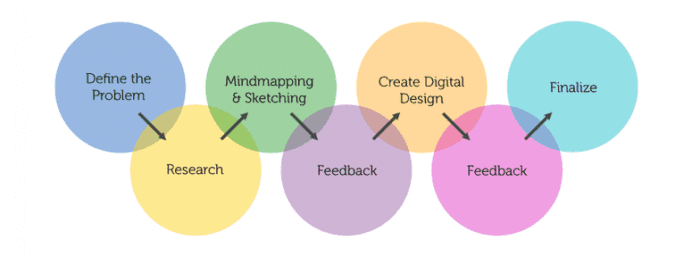

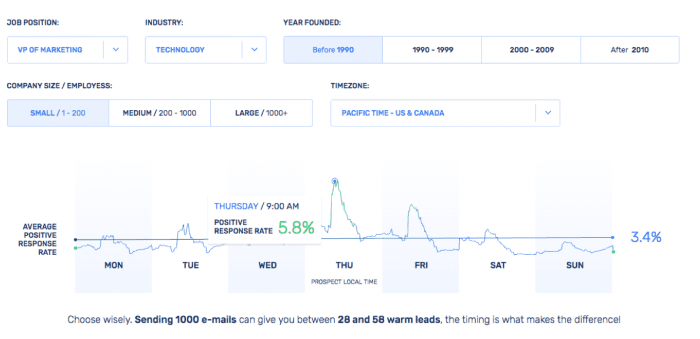
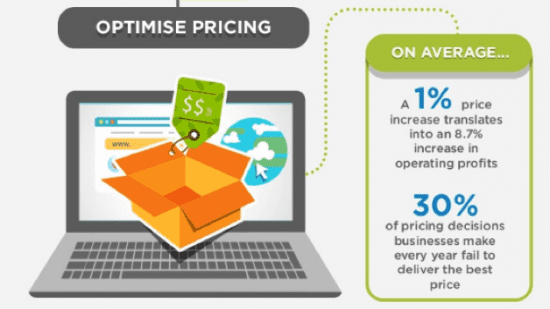
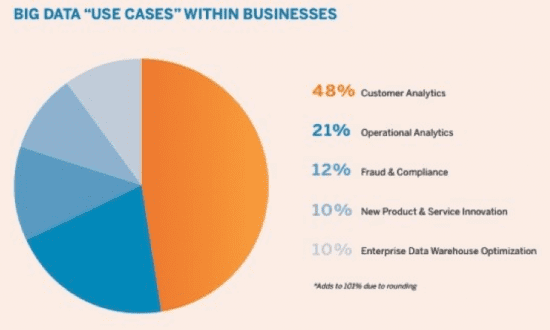

No comments:
Post a Comment